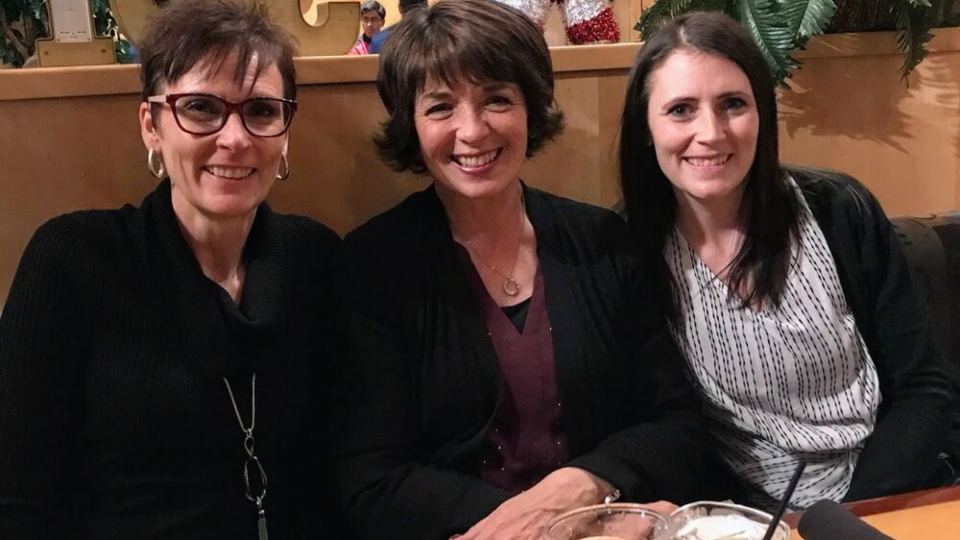
adoption-reunification
Allison Rasmussen, right, has lunch with her mother, Sherilyn Stinson, center, and her birth mother, Jill Morgansen, left, in Salt Lake County, Utah, on December 18, 2018. Photo provided by Sherilyn Stinson, courtesy of Church News.All rights reserved.This story appears here courtesy of TheChurchNews.com. It is not for use by other media.
By Mary Richards, Church News
A few days before Christmas in 1981, Sherilyn Stinson’s world changed forever with a simple phone call.
She and her husband had been trying to have children for years. Her dream of motherhood came true when their adoption worker called to tell them a baby boy was waiting.
“As soon as I held him in my arms, I fell in love, and I knew he was our ‘own,’” she said.
Two years later, also in December, Stinson got another phone call: “How would you like a baby girl?”
Stinson wrote about adopting Aaron and Allison for the Deseret News’ “The Christmas I Remember Best” in December 2008, saying: “Amid the holiday flurry, my thoughts always turn to each of my children’s amazing, courageous birth mothers, whose selfless love made my dreams come true.”
At that time, she had never met those birth mothers. “How I wish they could know that the children they placed so trustingly with us became wonderful, well-adjusted adults. How I wish they could know the exquisite joy they brought into our lives,” she wrote.
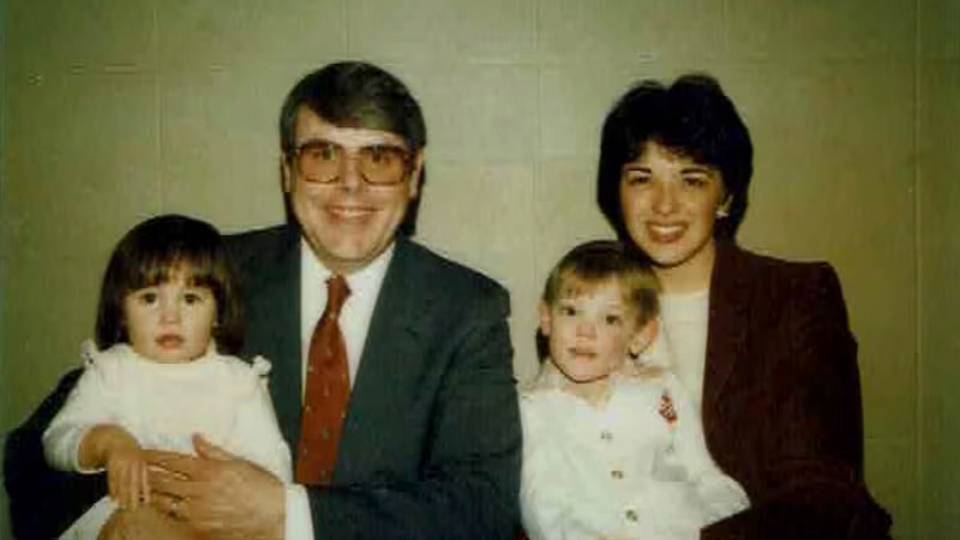
Adoption-reunification
Marshall and Sherilyn Stinson hold their children, Aaron and Allison, in 1985. Photo provided by Sherilyn Stinson, courtesy of Church News.2024 by Intellectual Reserve, Inc. All rights reserved.Both adoptions were handled through Family Services of The Church of Jesus Christ of Latter- day Saints. While Family Services is no longer an adoption placing agency, it continues to maintain adoption records — but is only able to provide non-identifying information in keeping with original commitments for privacy and sealed court records.
- The Church recently produced a guide called Adoption Reunification that outlines different concepts and resources for approaching reunification for what is known as the adoption triad: the child, the birth parents and the adoptive parents. The guide is expected to be published online in the Adoption section of Life Help in the Gospel Library soon.
Stinson, who is now the commissioner of Family Services, said concern for the feelings of adoptive parents often prevents children in closed adoptions from seeking more information about their birth families.
“It is important for adoptive parents to respect a child’s desire to fill the gaps in their history and understand that this is a healthy curiosity, which does not necessarily diminish the strength of their bond or their role as parents,” Stinson said.
One of the resources the guide lists is commercial DNA ancestry matching services. Stinson said there are concerns that these companies are doing so without important cautions and considerations for privacy — which can result in hurt, disappointment or other unintended consequences.
But she said DNA matches that are handled with care and sensitivity are resulting in meaningful experiences, which may include meeting birth families and obtaining personal history.
Such was the case for Stinson’s daughter Allison — now Allison Rasmussen. When she was 34 years old, Rasmussen and her birth mother, Jill Morgansen, each took a DNA test, found out about each other and reached out to reunite.
“Theirs is one of the beautiful outcomes, and they and we have a very healthy relationship,” Stinson said.
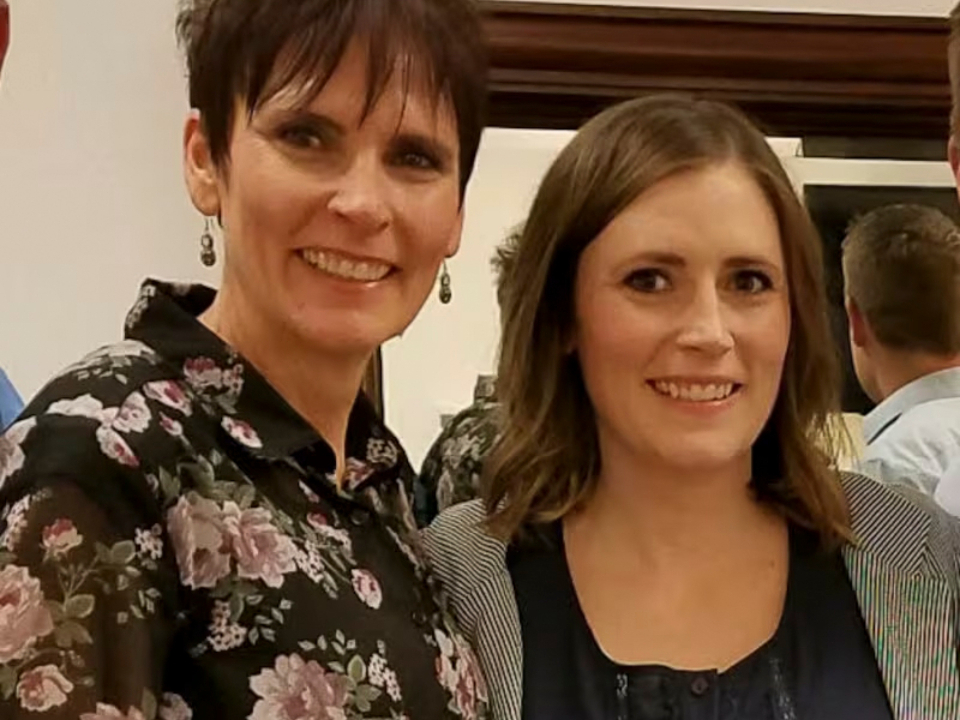
Adoption-reunification
Allison Rasmussen, right, meets her birth mother, Jill Morgansen, for the first time at the Family Services offices in Sandy, Utah, on February 10, 2018. Photo by Sherilyn Stinson, courtesy of Church News. All rights reserved.‘I Always Knew’
Rasmussen and Morgansen spoke together to the Church News about how they met again. They each had a testimony of the Spirit’s role in the timing.
Morgansen — who was 16 years old when she became pregnant — said even from the time that her mother was driving her home from the hospital after she signed adoption papers, she knew she would see the baby again.
“I always knew that I was going to be able to find her. It’s the same thing when I did the DNA test,” she said. “The thought never crossed my mind, ‘What if I don’t get a match?’ I just knew.”
Morgansen bought the DNA test on sale in the fall. On Dec. 23, 2017, she got the results back. Now she had a name, but no picture or anything she could find that seemed right. So she decided to wait, giving herself a six-week timeframe.
And six weeks was exactly what Rasmussen needed. She, too, received the test in the fall and took it, but her life was busy. Her husband was finishing medical school rotations in New York City, they were packing to move back to the Intermountain West, he was interviewing for jobs, and she was about to have their fifth child.
Christmas came and went, and then there were complications with the baby — a scary birth, a helicopter ride and a longer hospital stay: “It was a very highly stressful time.”
By February 2018, the baby was doing better, and life was feeling more settled. Rasmussen, her husband and children decided to go to the movies with her parents on a Saturday. That same day, Morgansen sent a message to Rasmussen through the DNA company’s website.
Rasmussen saw the message at a stop light by the movie theater. “I just got a letter from my birth mom,” she told her husband.
Morgansen and Rasmussen realized that everything had happened when it was supposed to. They emailed back and forth, talked the next day and then met in person a few days later at the Family Services offices in Sandy, Utah — with picture albums on their laps as they sat together on the couch.
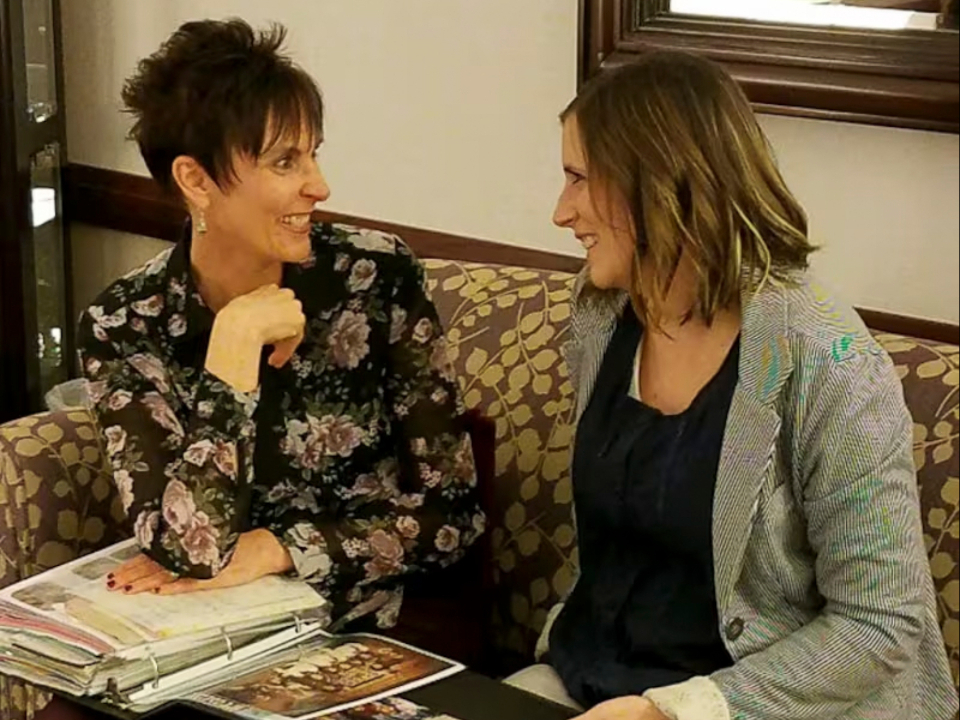
Adoption-reunification
Allison Rasmussen, right, shares photos in a photo album with her birth mother, Jill Morgansen, after they met for the first time at the Family Services offices in Sandy, Utah, on February 10, 2018. Photo provided by Sherilyn Stinson, courtesy of Church News.All rights reserved.Reuniting While Respecting Boundaries
The Church’s Adoption Reunification Guide explains that preparation and support are important before meeting. So are emotional readiness, clear communication and a gradual approach — all of which Rasmussen and Morgansen did.
Rasmussen said managing expectations is crucial. “You can’t go in thinking everything will be all wonderful or thinking that it will be horrible. You really don’t know.”
Morgansen spoke about their approach. “We did a lot of things together and kind of got to know each other. Allie put together a couple of books with her whole life story and things for me, and it was good.”
Both recommended using a counselor or a therapist to help with the process. Morgansen said counseling was especially helpful for her because reuniting brought up some things that she had not dealt with for many years or had even suppressed or forgotten about.
Respecting boundaries and privacy of all parties are important, explains the Church’s guide, as some people might need more space or time than others and their comfort levels should be respected.
Sherilyn Stinson had purchased two DNA tests at the same time. But her son Aaron Stinson had never felt a curiosity to find his birth family or a need to seek out anything else.
“I felt fulfilled as a child and that I was supposed to be where I was,” he said. But as his sister did the DNA test, he decided to do it as well.
As they worked through various records and other means to identify his birth mother, they found out she had died a few months before they could reunite.
“I guess there was a moment where I felt a little bit sorrowful that I didn’t get to ever at least meet for one time and say ‘hi’ and ‘thank you’ or whatever would come to mind,” he said.
Sherilyn Stinson said she was crushed to learn of her son’s birth mother’s death after working so hard to identify her. “We are so indebted to these courageous women and had longed for the day to thank them. We will have to wait until the next life to thank her.”
But Aaron Stinson was able to connect with a half-sister through the DNA matching, and they see each other every so often. They have a good relationship with boundaries they both appreciate.
“I don’t know if emotionally I would be able to handle what my sister has with her birth mom,” he said. “I think that’s what gets lost when you hear some adoption reunion stories. Some people think everyone needs to go seek it out. But there are people like me, I believe, that are fine. That’s their family, and that’s enough for them.”
Healing and Feeling Whole
Rasmussen said growing up, she never felt negative feelings about being adopted. She never had a hole she needed filled. To Morgansen, that was a wonderful blessing.
“As a birth mother, the one thing I prayed for the most was that my precious daughter would be loved and taught about our Heavenly Father and Jesus Christ, and Their love for her,” Morgansen said. “She knows who she is, a daughter of God, and her parents are wonderful parents who instilled that in her. She wasn’t lacking anything that needed filled.”
Meeting and staying in touch helped Morgansen heal, even though she didn’t know she needed it. Her husband and children were happy for her and happy to meet Rasmussen. In fact, both families are similar, with close and loving relationships with cousins, aunts, uncles and extended family members.
Rasmussen said she has only ever felt grateful for her life.
“I always knew I might never know. And I was OK with that,” she said “I always just knew if it was supposed to happen, it would.”
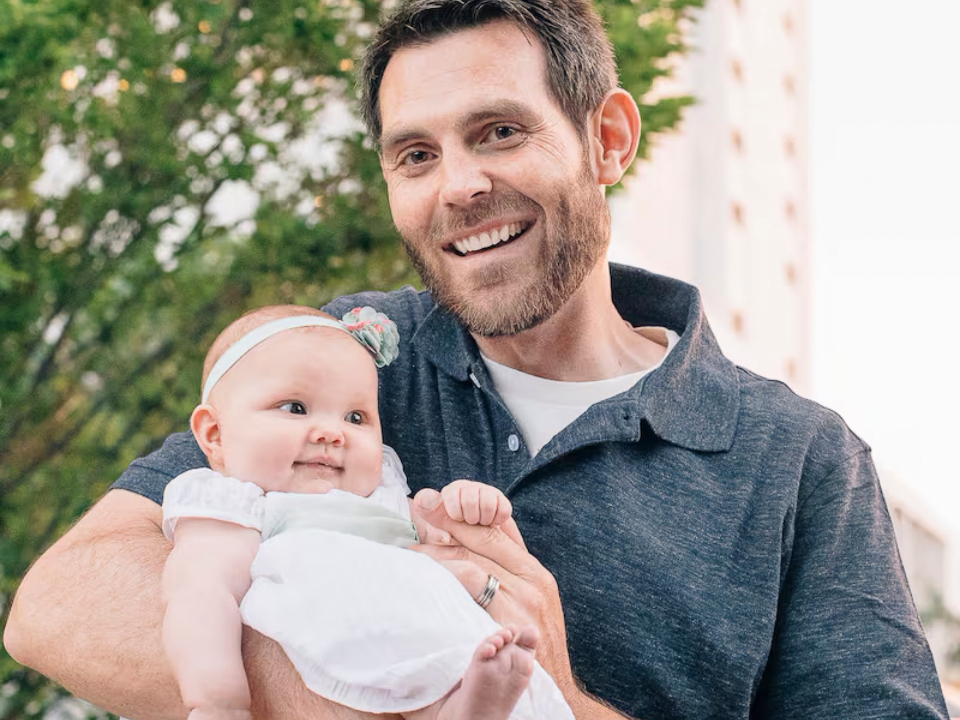
Adoption-reunification
Aaron Stinson holds his daughter Gabby in 2018. Photo by Sherilyn Stinson, courtesy of Church News.All rights reserved.Aaron Stinson said, “I’m content with the way my life is. I feel like there was divine intervention to move me to the family I got into. Knowing and believing and understanding that was enough for me.”
Adoptive parents are heroes in Morgansen’s mind.
“This hasn’t just been like me and Allison in this at all; her parents have been involved in every aspect of all of this as well, and I love them so much.”